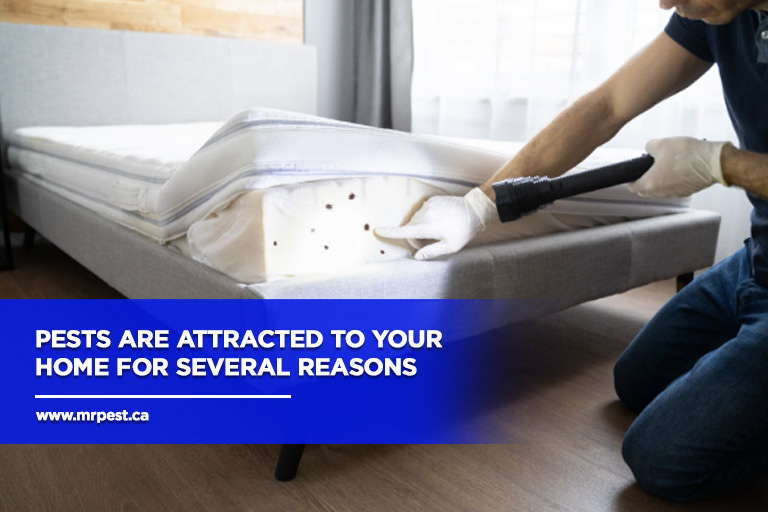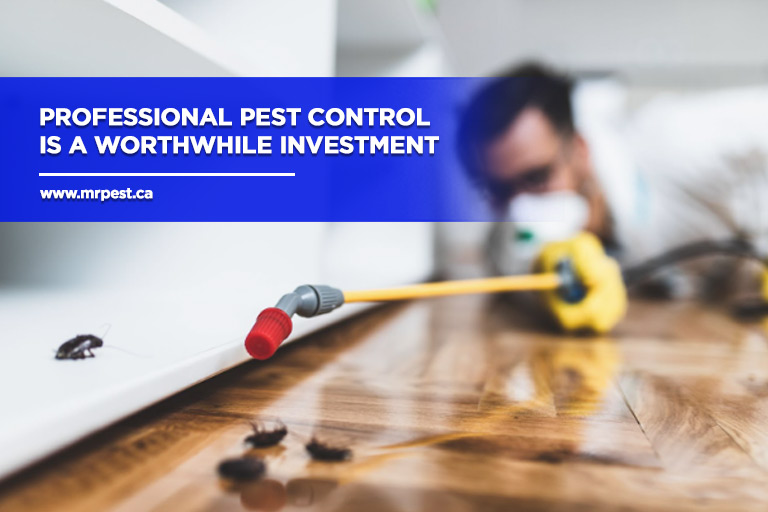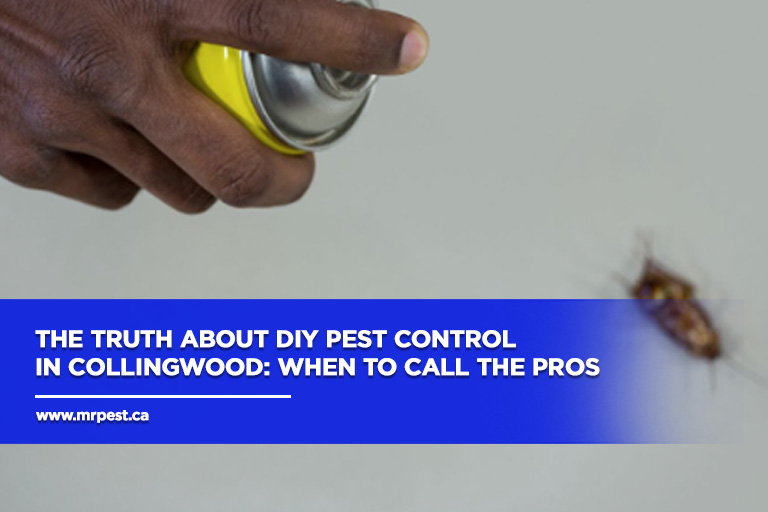In Collingwood, DIY pest control has become increasingly popular as residents seek ways to manage pesky intruders on their own terms. However, while taking matters into your own hands can be empowering, it’s essential to understand the risks and limitations involved. This article delves into the nuances of DIY pest control in Collingwood, exploring when it’s prudent to tackle the problem solo and when it’s time to call in the professionals.
The Risks of DIY Pest Control
Embarking on a DIY pest control journey in Collingwood may seem like a cost-effective solution, but it comes with its share of risks. Before delving into homemade remedies or store-bought solutions, it’s vital to consider:
Health Risks
- Exposure to chemical pesticides can pose health hazards to you, your family, and your pets. Certain chemicals used in DIY pest control may lead to respiratory issues, skin irritation, or even poisoning if not handled correctly.
- Improper handling of pest control products may lead to skin irritation, respiratory issues, or even poisoning. It’s crucial to follow safety guidelines and use protective gear when using chemical-based pesticides.
Property Damage
- Misuse of DIY pest control methods can result in damage to your property, such as staining or deterioration of surfaces. Chemical pesticides may cause discolouration or damage to furniture, flooring, and other household items if not applied properly.
- Ineffective techniques may exacerbate pest infestations, leading to costly repairs down the line. For example, attempting to exterminate termites without professional assistance may worsen structural damage to your home.
Ineffectiveness in Long-Term Pest Management
- DIY solutions often provide temporary relief but fail to address the underlying causes of pest infestations. Without understanding pest behaviour and biology, DIY efforts may only suppress pest activity temporarily, allowing infestations to rebound.
- Without proper expertise, DIY efforts may inadvertently attract more pests or drive them deeper into hiding, making eradication challenging. Pest populations may rebound stronger if not effectively managed, leading to recurring infestations.
Common DIY Pest Control Methods
Collingwood residents commonly turn to various DIY pest control methods, including homemade remedies, store-bought traps, and pest exclusion techniques. Let’s explore the pros and cons of each approach:
Homemade Remedies
- Pros:
-
-
- Cost-effective alternatives using household items like vinegar, baking soda, or essential oils. These remedies offer a natural, eco-friendly approach to pest control, minimizing chemical exposure.
- Minimal environmental impact compared to chemical pesticides. Homemade remedies reduce reliance on synthetic chemicals, promoting sustainability and reducing environmental pollution.
-
- Cons:
-
- Limited efficacy against persistent pest infestations. While homemade remedies may temporarily deter some pests, they often lack the potency to eradicate infestations.
- Lack of standardized dosages and application methods may result in inconsistent results. Without precise measurements and application techniques, homemade remedies may fail to deliver consistent results, leading to frustration and disappointment.
Store-Bought Traps and Repellents
- Pros:
-
-
- Convenient solutions are readily available at local hardware stores or online retailers. Store-bought traps and repellents offer a quick and accessible option for addressing minor pest problems without the need for extensive preparation or expertise.
- Designed to target specific pests and offer quick results. Commercially available traps and repellents are formulated to attract or repel specific pests, increasing their effectiveness compared to generic DIY solutions.
-
- Cons:
-
- Some products may contain harmful chemicals harmful to humans and pets. While many store-bought products are considered safe when used as directed, certain chemical pesticides may pose health risks to humans, pets, and the environment.
- Reliance on one-size-fits-all solutions may not effectively address unique pest control needs. Store-bought traps and repellents may not be tailored to the specific pest species, severity of infestation, or environmental conditions, limiting their effectiveness in some cases.
DIY Pest Exclusion Methods
- Pros:
-
-
- Focuses on preventing pests from entering your home by sealing cracks, gaps, and entry points. Pest exclusion techniques provide a proactive approach to pest control, addressing underlying vulnerabilities to prevent infestations before they occur.
- Long-term solution that complements other pest control measures. By addressing structural deficiencies and implementing preventive measures, DIY pest exclusion methods can reduce the risk of future infestations and minimize the need for ongoing intervention.
-
- Cons:
-
- Requires thorough inspection and maintenance to ensure effectiveness. Proper implementation of pest exclusion measures requires attention to detail and regular upkeep to identify and address new entry points as they arise.
- Inability to address existing infestations may limit immediate results. While pest exclusion techniques can prevent future infestations, they may not eliminate existing pest populations, requiring additional intervention to eradicate established infestations effectively.
Understanding Pest Infestations in Collingwood

Collingwood’s unique climate and environmental factors contribute to a variety of pest infestations, ranging from rodents to insects. Factors to consider include:
Climate Conditions
- Harsh winters and humid summers create conducive environments for pests to thrive. Temperature fluctuations may drive pests indoors in search of shelter and food sources.
- Humid conditions during summer months provide ideal breeding grounds for mosquitoes, flies, and other insects, increasing the likelihood of indoor infestations.
Environmental Factors
- Proximity to wooded areas, bodies of water, and green spaces increases the likelihood of pest encounters. Collingwood’s natural surroundings provide habitats for various pests, including wildlife.
- Landscaping practices and waste disposal habits can attract pests to residential and commercial properties. Improperly maintained yards, overflowing garbage bins, and food debris can attract pests and facilitate infestations.
Structural Vulnerabilities
- Older buildings with cracks, crevices, and compromised seals provide easy access for pests. Gaps around doors, windows, and utility penetrations allow pests to enter buildings undetected.
- Improper sanitation practices or cluttered spaces create breeding grounds for pests to multiply. Accumulated debris, food crumbs, and moisture promote pest activity and exacerbate infestations if left unchecked.
Identifying the Severity of Pest Infestations
Early detection of pest infestations is crucial for effective pest management. Signs of a severe infestation include:
- Visible pest activity during daylight hours, such as sightings of rodents or cockroaches.
- Foul odours indicate nesting or breeding sites, such as the musty smell of rodent urine or the pungent odour of cockroach pheromones.
- Property damage such as chewed wires, gnaw marks, or droppings indicates the presence of rodents or other pests.
When to Call Professional Pest Control Services

While DIY methods may suffice for minor pest problems, certain scenarios warrant the expertise of pest control professionals. Signs indicating the need for professional intervention include:
- Persistent or worsening pest activity despite DIY efforts, such as ongoing sightings of pests or signs of damage.
- Inability to identify the extent of the infestation or locate nesting sites, indicating a need for professional inspection and assessment.
- Concerns about health and safety risks associated with DIY pest control methods, such as exposure to hazardous chemicals or the presence of nasty pests.
Benefits of Hiring Pest Control Professionals
Professional pest control services offer several advantages over DIY approaches:
- Expertise in pest identification and behaviour enables targeted treatment strategies tailored to the specific pest species and infestation severity.
- Access to specialized equipment and products for safe and effective pest eradication.
- Long-term pest prevention plans tailored to the unique needs of your property, addressing underlying vulnerabilities and implementing preventive measures to minimize the risk of future infestations.
- Guarantees and warranties on services provide peace of mind and assurance of results, ensuring that your pest problem is resolved effectively and efficiently.
- Time and cost savings compared to ongoing DIY attempts that may prove ineffective or exacerbate pest problems, allowing you to reclaim your time and resources.
- Professional advice on maintaining a pest-free environment through preventive measures, including sanitation practices, structural repairs, and landscaping improvements.
DIY pest control in Collingwood needs a balanced approach. While DIY methods can offer temporary relief, knowing when to enlist professional help is paramount for long-term success. By understanding the risks and benefits associated with DIY pest control and recognizing the signs that indicate professional intervention is necessary, you can safeguard your homes and businesses against pest infestations.
For comprehensive pest control solutions tailored to your specific needs, contact Mr. Pest Control, your trusted partner in pest control in Collingwood. Give us a call at 1-888-794-PEST. Don’t let pests take over your property – take action today!



